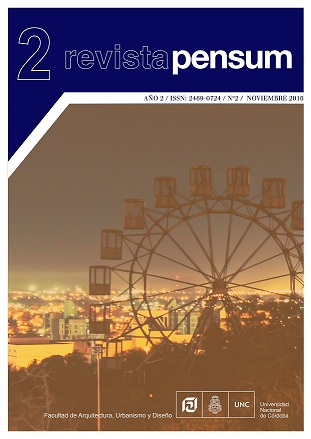ANALYSIS OF THE BEHAVIOR OF non CONVENtional STRUCTURAL TYPOLOGIES iN PROJECTS in SEISMIC AREAS
DOI:
https://doi.org/10.59047/2469.0724.v2.n2.16515Keywords:
Structural design, Earthquake structure, ArchitectureAbstract
The structural challenges that arise from the current architectural trends motivate us to reflect on the skills or criteria acquired during the degree of architecture, when selecting the tools and methodologies of analysis to apply for their correct evaluation. This turns especially evident with the study of seismic mechanisms using simplified methods suchs as the static equivalent proposed by the regulation for buildings located in areas with seismic risks. Simplified analysis procedures are tools for checking for predictable structural behavior, according to design parameters, over the life of a building and its level of approximation to actual behavior will always depend on the criteria of the designer. In the following text, a building is analyzed showing the scope of the methods learned during the academic training of the architect.References
Applied Technology Council (1996) Sismic evaluation and retrofit of concrete buildings. California.
Arnold C., Reitherman R. (1987) Configuración y diseño sísmico de edificios, México, Limusa.
Material didáctico de la cátedra de Estructuras III FAUD-UNC (2014) El edificio en altura, Córdoba,
Publicación digital http://uncavim10.unc.edu.ar/course/view.php?id=43§ion=14
Moisset, D. (1999) Intuición y Razonamiento en el Diseño Estructural, Córdoba, Argentina, Ed.
Ingreso.
Moisset, D., Goytia, N. (2002) Diseñar con la Estructura. Córdoba, Argentina, Ed. Ingreso.
NILSON, A. (2001) Diseño de estructuras de concreto. Ed. Mc Graw Hill
Paulay T.; Priestley N. (1992) Sismic design of reinforced concrete and masonry buildings
Reboredo, A. (2000) Manual de construcción sismo resistente. UNC
Reglamento INPRES-CIRSOC 103 – Parte I (Julio 2013) Reglamento Argentino para construcciones
sismorresistentes.
Reglamento CIRSOC 201 (2005) Reglamento Argentino de estructuras de hormigón.
Torroja Miret, E. (2000) Razón y ser de los tipos estructurales. 10° Ed. Madrid, España, Consejo
Superior de Investigaciones Científicas. Instituto de Ciencias de la Construcción Eduardo Torroja.
Downloads
Published
Issue
Section
License
Authors who publish in this journal agree to the following terms:
a. Authors retain copyright and guarantee to the journal the right to be the first publication of the work as well as licensed under a Creative Commons Attribution-ShareAlike 4 license.
b. Authors may separately establish additional agreements for non-exclusive distribution of the version of the work published in the journal (e.g., placing it in an institutional repository or publishing it in a book), with an acknowledgement of its initial publication in this journal.
c. Authors are permitted and encouraged to disseminate their work electronically (e.g., in institutional repositories or on their own website) before and during the submission process, as this may result in productive exchanges, as well as earlier and greater citation of published work (See The Effect of Open Access).
d. 4.0 International Creative Commons Attribution-ShareAlike 4.0 License.












